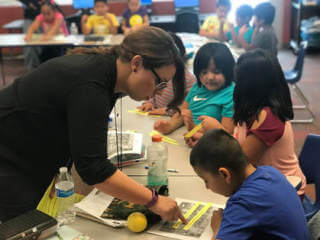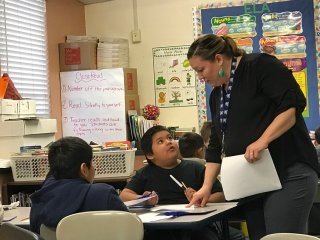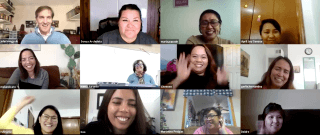Scaffolding is one of the most essential skills an educator can develop, yet the process of scaffolding in the design and delivery of a lesson is often one of the most misunderstood concepts in teaching.
TESOL Trainers’ professional development workshops on scaffolding break down the science of scaffolding into manageable strategies and techniques that any educators can employ in the execution of their lessons immediately after completing our training.

Scaffolding is structuring learning in a step-by-step manner so that students are able to demonstrate their learning without the teacher's support. While teachers will say that breaking up a lesson into more digestible pieces is best, many teachers often struggle with being able to scaffold learning effectively and efficiently.
TESOL Trainers can help your educators master the fundamental principles of scaffolding learning. In addition to learning how to scaffold a lesson while planning, we help teachers become adept at employing scaffolding strategies while teaching. Being able to make things more (or less) digestible “in the moment” is a trait that effective teachers exhibit.
TESOL Trainers provides professional development that empowers and inspires teachers. Participants in our teacher training sessions not only leave with a solid understanding of the content. They also leave with the ability to integrate the PD's content into their teaching practices.

No matter what you are teaching, one thing is certain: a well-crafted lesson is also a well-scaffolded lesson. When teachers don't scaffold, some learners may finish successfully, but most only find frustration. In addition to the students feeling like they will never "get it", the teachers are left feeling frustrated that their students aren't rising to the challenge.
On the other hand, teachers who have gone through Dr. John Kongsvik's workshop on Scaffolding Students into Success, find they can easily scaffold students to owning the content and language of the lesson by using the strategies presented in TESOL Trainers’ workshops.
Some teachers may have misconceptions about what scaffolding is, the stages it involves, and the purpose of each. Here are the 5 most common misconceptions about scaffolding:

The Gradual Release of Responsibility is an approach to scaffolding a lesson's content in order to make it more accessible to students. The This method of structuring teaching and learning in the classroom has four stages (See Below).
The Gradual Release of Responsibility is designed to move the students (gradually) from needing the teacher's full support (by the end) not needing any support from the teacher to succeed. Its step by step approach transfers the responsibility of having to demonstrate ownership from the teacher to the students.

Stage 1: Teacher does; Students watch
During this initial phase, the teacher models how to do something (e.g. identify sentence fragments). The students follow the teacher along as she demonstrates for the students. It's her responsibility to provide a proper model.

Stage 2: Teacher does; Students help
During this next phase, the teacher provides another example (of spotting sentence fragments. This time, the teacher elicits input from the students. While she gives students a greater role, it's mostly still her responsibility.

Stage 3: Students do; Teacher helps
During this third phase, small groups of students practice the task (of spotting sentence fragments). This time, the teacher plays a less active role, merely helping students who are stuck. At this point, students have a greater share of the responsibility than the teacher.

Stage 4: Students do; Teacher watches
During this final phase, students do the task (of spotting sentence fragments) independently of their peers and teacher. This time, the teacher plays the role of an observer. At this point, students have 100% of the responsibility to show what they know.
Educators who complete TESOL Trainer's Professional Development on Scaffolding Students into Success have greater confidence and competence at scaffolding. Here are a few other things they wind up leaving our workshops with:
Properly scaffolding learning has never been more important than now. Whether you have a classroom full of multilingual learners or have no English Learners, all students learn more effectively and more efficiently when the lesson is well-scaffolded.
TESOL Trainers offers interactive and inspiring professional development on scaffolding strategies that can profoundly impact how teachers design and deliver their online lessons. Some of the topics we cover during this teacher training sessions are:

Become part of our TESOL network and gain access to valuable content!